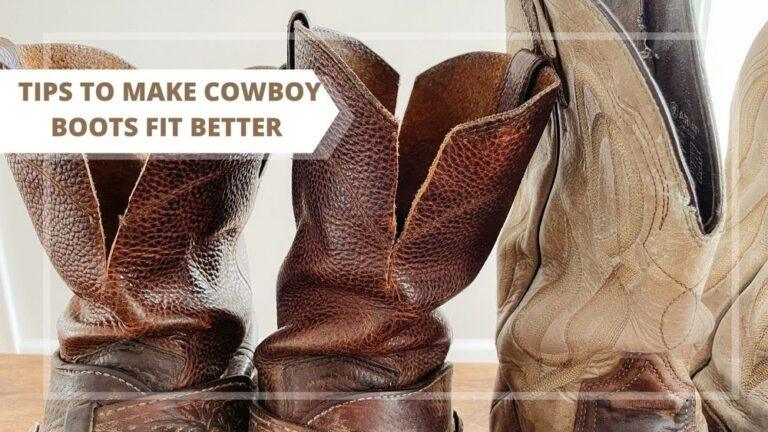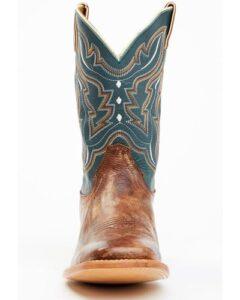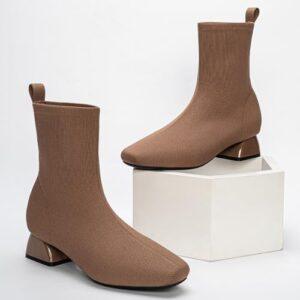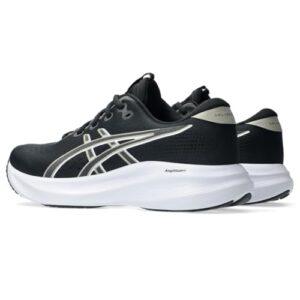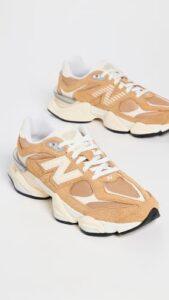Are your cowboy boots feeling a little loose or slipping off as you walk? You’re not alone—many boot lovers struggle with getting that perfect, snug fit.
The good news is, tightening your cowboy boots is easier than you think. Whether you just bought a new pair or your trusty boots have stretched over time, simple tricks like adding insoles, wearing thicker socks, or using heel grips can make a big difference.
If you want a more permanent fix, professionals can help customize your boots to fit like a glove. Keep reading, and you’ll discover practical, easy-to-follow tips that will have your boots fitting tighter and feeling more comfortable in no time. Your perfect fit is just a few steps away!
Reasons For Loose Cowboy Boots
Loose cowboy boots cause discomfort and affect your walking. Understanding why boots become loose helps you fix them correctly. Several reasons lead to a poor fit and loose feeling inside your boots.
Incorrect Boot Size
Buying boots too large is a common cause of looseness. Boots that do not fit well leave extra space around your feet. This space causes your feet to slide inside the boots.
Worn Out Insoles
Old or thin insoles lose their cushioning over time. This loss creates more room inside the boots. Worn insoles reduce the snug fit that once held your feet tightly.
Leather Stretching
Leather naturally stretches with wear. Constant use makes boots bigger and looser. Stretching is normal but can cause boots to lose their tight grip.
Foot Shape Changes
Your feet can change shape due to weight gain or loss. Swelling or shrinking affects how boots fit. Changes in foot size cause boots to feel loose or tight unexpectedly.
Heel Slippage
Loose boots often cause heel slipping when walking. Heel slippage happens if the boot does not grip your heel well. This issue makes the boots feel loose and uncomfortable.
Using Insoles For A Tighter Fit
Using insoles is a simple and effective way to tighten cowboy boots. Insoles add extra layers inside the boot, reducing space and improving the fit. This method works well for boots that feel too loose but are otherwise comfortable.
Choosing the right type of insole depends on where the boot feels loose. Full-length insoles add support to the entire foot, while heel-only insoles target just the heel area. Both can make your boots fit better without causing discomfort.
Full-length Insoles
Full-length insoles cover the entire inside of the boot. They lift your foot slightly, filling up extra space from heel to toe. These insoles improve comfort and provide a snug fit throughout the boot.
Choose insoles made of foam or gel for added cushioning. Insert them under the existing insole or remove the original one if needed. Check that the boots still close easily after adding the insole.
Full-length insoles work best for boots that feel loose in multiple areas. They prevent your foot from sliding forward and reduce overall movement inside the boot.
Heel-only Insoles
Heel-only insoles focus on tightening the back part of the boot. They fill the space around your heel, stopping it from slipping up and down. These insoles are smaller and easier to insert.
They come in various thicknesses and materials, including gel pads and foam cushions. Place the heel insole directly under your heel area inside the boot. This adds grip and holds your foot securely.
Heel-only insoles are ideal for boots that fit well in the toe but feel loose at the heel. They help prevent blisters caused by rubbing and improve walking stability.
Wearing Thicker Socks
Wearing thicker socks is a simple and effective way to tighten cowboy boots. The extra padding fills the space inside the boot, making the fit snugger. This method does not require any tools or professional help.
Choosing the right socks is important. Thick wool or thermal socks add more volume than thin cotton ones. They cushion your feet and reduce slipping inside the boot. Wearing thicker socks also protects your feet during long wear.
Choose Socks That Add Enough Thickness
Select socks made for cold weather or hiking. These socks are thicker and more durable. Avoid socks that are too tight or too loose. The right thickness adds comfort and tightens the fit without causing pain.
Try Different Sock Combinations
You can layer socks to get the perfect fit. Start with a thin sock, then add a thicker one on top. This layering fills gaps and shapes your foot inside the boot. Experiment with different combinations until the boot feels secure.
Consider Sock Material For Comfort
Socks made of wool or synthetic blends offer warmth and cushioning. Cotton socks absorb moisture and may cause blisters. Thick wool socks keep feet dry and cozy. Comfortable feet mean better wear and less foot fatigue.
Check Boot Fit After Wearing Thick Socks
Wear the boots with thick socks around the house first. Walk and stand to test the fit. The boots should feel snug but not tight. If the boots are still loose, try thicker socks or add insoles for extra support.

Credit: www.youtube.com
Applying Heel Grips
Applying heel grips is a simple and effective way to tighten cowboy boots. Heel grips fill the space between your heel and the boot. This prevents your foot from slipping inside the boot. Heel grips also add comfort by reducing friction and blisters. They work best if the boots are loose around the heel area.
Choosing The Right Heel Grips
Select heel grips made from soft, cushioned materials. Look for gel, foam, or leather pads. Make sure they are the right size for your boots. Some heel grips have adhesive backing for easy attachment. Choose grips that are thin but provide enough padding.
Preparing Your Boots For Heel Grips
Clean the inside back of your boots before applying heel grips. Use a dry cloth to remove dust and dirt. This helps the adhesive stick better. Avoid using water or cleaning sprays. Let the boots dry completely if they are damp.
How To Apply Heel Grips
Peel the backing off the heel grip to expose the sticky side. Press the grip firmly against the inside back of the boot heel. Hold it in place for a few seconds to secure. Repeat for the other boot. Try on your boots and walk around to check the fit.
When To Replace Heel Grips
Replace heel grips if they lose stickiness or become worn. Check them regularly, especially after heavy use. Remove old grips carefully to avoid damaging the boots. Apply new grips as needed for continuous comfort and fit.
Adding Tongue Pads And Kilties
Adding tongue pads and kilties is a smart way to tighten cowboy boots. These simple additions fill extra space inside the boots. They help your boots fit snugly without changing their shape. Both options are easy to use and can improve comfort quickly.
What Are Tongue Pads?
Tongue pads are small cushions placed under the boot’s tongue. They push your foot back slightly. This prevents your foot from sliding forward. Tongue pads are thin but firm. They add just enough bulk to tighten the fit around the instep. Many come with adhesive backing for easy placement.
How To Use Tongue Pads
Peel off the backing of the tongue pad. Stick it under the tongue of your boot. Adjust the pad to where it feels most comfortable. Wear the boots for a while to test the fit. You can add or remove pads to get the perfect tightness. Tongue pads work best for boots that feel loose on top.
Understanding Kilties
Kilties are leather flaps that cover the laces or front of the boot. They add thickness inside the boot’s front area. Kilties help fill extra space and reduce slippage. They also protect the laces from dirt and wear. Kilties come in different styles and can add a classic look to your boots.
Installing Kilties In Cowboy Boots
Slide the kiltie under the laces or attach it to the boot’s shaft. Some kilties have snaps or ties for secure fitting. Make sure the kiltie covers the area where your foot feels loose. Wear the boots to check the new fit. Kilties are great for boots that feel roomy near the top or front.
Professional Cobbler Adjustments
Professional cobbler adjustments offer a precise way to tighten cowboy boots. Cobblers have the tools and skills to reshape and modify boots for a perfect fit. Their work ensures comfort without damaging the leather or altering the boot’s style.
These adjustments last longer than temporary fixes like insoles or thick socks. A cobbler can tailor each boot specifically to your feet. Two common professional services include taking in the boot and attaching leather heel backs.
Taking In The Boot
Taking in the boot means reducing its width or circumference. The cobbler carefully removes the lining and reshapes the leather. This process tightens the boot around the foot and ankle. It is ideal for boots that feel loose but are the correct length.
The cobbler uses special machines to stretch or shrink the leather. The job requires experience to avoid ruining the boot. After taking in the boot, the leather molds better to your foot shape.
Attaching Leather Heel Backs
Leather heel backs add support and reduce heel slippage. The cobbler attaches a piece of leather to the back of the boot’s heel area. This fills extra space and holds your foot firmly in place.
This method works well if the heel feels loose or lifts while walking. The leather heel back also protects the boot from wear and tear. A skilled cobbler matches the leather to your boot’s color and texture.
Using Boot Stretchers For Fit
Using boot stretchers is an effective way to adjust the fit of cowboy boots. These tools help expand specific areas without damaging the leather. Proper use of a boot stretcher can improve comfort by shaping the boot to your foot.
Boot stretchers come in different types, designed to target areas like the toe or calf. They work by gently applying pressure inside the boot, loosening tight spots. This method is especially useful if your boots feel too snug but are not too large overall.
Choosing The Right Boot Stretcher
Select a stretcher that matches the boot’s size and shape. Toe stretchers focus on the front, while calf stretchers expand the upper shaft. Some stretchers have adjustable knobs to control the pressure.
Wooden stretchers are durable and provide even pressure. Plastic models are lightweight and affordable. Pick one that suits your budget and boot type.
How To Use A Boot Stretcher
Insert the stretcher inside the boot, positioning it where the boot feels tight. Turn the handle or knob slowly to expand the stretcher. Do this until you feel slight resistance but no pain.
Leave the stretcher inside the boot for 6 to 8 hours or overnight. This time allows the leather to stretch gradually. Remove the stretcher and test the fit. Repeat if more stretch is needed.
Tips For Best Results
Use a leather conditioner before stretching to keep the leather soft. Avoid forcing the stretcher too much to prevent damage. Stretch in small increments over several days.
If you need to stretch a very tight spot, consider using a spray designed to soften leather. This helps the stretcher work more effectively and reduces the risk of cracks.
Credit: www.reddit.com
Tips For Breaking In Cowboy Boots
Breaking in cowboy boots is essential for a comfortable fit. New boots can feel tight or stiff. Properly softening them helps avoid pain and blisters. The leather needs time to mold to your feet. Follow simple tips to make this process smooth and effective.
Wear Thick Socks
Put on thick socks before wearing your boots. This adds padding and protects your feet. It also helps stretch the leather gently. Wear boots around the house for short periods. Repeat this daily to soften the boots without damage.
Use Boot Stretchers
Boot stretchers are tools designed to widen your boots. Insert them into your boots when not wearing. Leave them for several hours or overnight. They apply gentle pressure, loosening tight areas. This method is safe and improves comfort gradually.
Apply Leather Conditioner
Leather conditioner keeps the material soft and flexible. Apply it evenly to the boots before wearing. Conditioned leather breaks in faster and lasts longer. Avoid using too much, or the leather may become too soft. Regular conditioning maintains your boots’ quality.
Walk On Soft Surfaces
Walk on carpet or grass during the break-in period. Hard surfaces may cause discomfort or damage. Soft surfaces allow the leather to stretch slowly. This reduces the risk of blisters and soreness. Increase walking time as the boots become more comfortable.
Use Heat Carefully
Warm the leather with a hairdryer for a few minutes. Wear the boots immediately while warm to help molding. Do not overheat, as this may damage the leather. This technique helps the boots fit tighter and feel softer. Always test on a small area first.
Maintaining Your Boots For Lasting Fit
Maintaining your cowboy boots for a lasting fit ensures comfort and durability. Proper care keeps the leather firm and prevents stretching. Regular maintenance helps the boots mold perfectly to your feet over time.
Cleaning and conditioning the leather stops it from drying out and losing shape. Storing boots correctly avoids unnecessary wear and tear. These steps support a snug and comfortable fit for years.
Cleaning Your Cowboy Boots Properly
Remove dirt and dust with a soft brush or cloth. Use a leather cleaner designed for cowboy boots. Clean boots dry faster and stay firm, reducing loose spots.
Conditioning The Leather Regularly
Apply a leather conditioner to keep the material soft and flexible. Conditioning prevents cracks and stiff areas that cause discomfort. Well-conditioned boots stay close to the foot shape.
Using Boot Trees For Shape
Insert boot trees when not wearing your boots. Boot trees keep the shaft upright and avoid creases. They help the boots keep their original size and shape.
Storing Boots In A Cool, Dry Place
Avoid storing boots in damp or hot spots. Heat can dry out leather, causing it to shrink or crack. Proper storage preserves the boots’ tight fit and extends their life.

Credit: www.reddit.com
Frequently Asked Questions
Is There A Way To Make Cowboy Boots Fit Tighter?
Yes, tighten cowboy boots by adding insoles, heel grips, thicker socks, or tongue pads. Visit a cobbler for permanent adjustments.
How To Fix Sagging Cowboy Boots?
Fix sagging cowboy boots by adding insoles, heel grips, or thicker socks to tighten the fit. Visit a cobbler for professional adjustments.
Is There A Way To Make Cowboy Boots Smaller?
Yes, you can make cowboy boots smaller by adding insoles, heel grips, or thicker socks. A cobbler can also adjust them professionally.
Is It Normal For Cowboy Boots To Feel Loose?
Yes, cowboy boots can feel loose initially. Adding insoles, thicker socks, or heel grips helps achieve a snug fit quickly.
Conclusion
Tightening cowboy boots can improve comfort and support. Simple fixes like insoles and thicker socks work well. Heel grips and tongue pads add extra snugness easily. For lasting results, a cobbler’s help can be worthwhile. Properly fitting boots protect your feet and enhance your style.
Take time to try different methods for the best fit. Enjoy your boots with confidence and comfort every step.

Madison Clark is a footwear expert and the voice behind MyStyleGrid.com. She specializes in honest shoe reviews, style tips, and practical guides to help readers find the perfect pair for any occasion. With years of experience in blogging and content creation, Madison makes footwear knowledge simple, stylish, and easy to follow.

